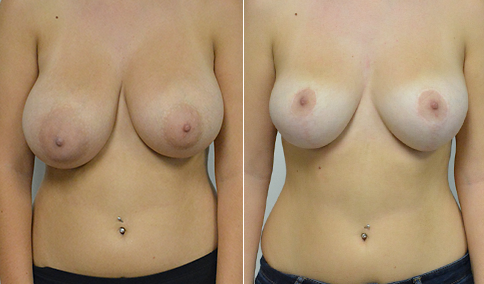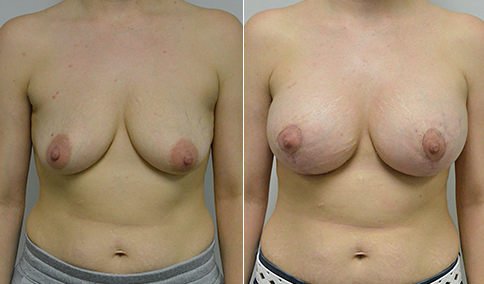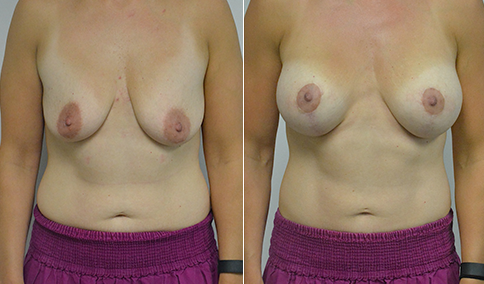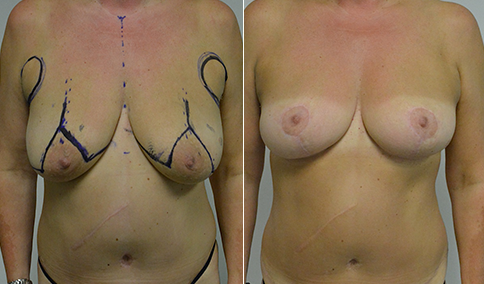A mother of 3 in her mid 30’s who is bothered by a deflated appearance of her breasts. Her nipples are each located 1 cm below her breast fold, which is the definition of ptosis or drooping of the breasts. When the nipple is below the breast fold it is generally best to add a mastopexy (breast lift). She is shown before and again, 11 months after augmentatioin mastopexy. 350 cc High profile round textured implants were placed in a “dual plane” location. An inverted T mastopexy was performed.
Explanation of choices made: I prefer round implants for breast augmentation-a recent study showed that trained plastic surgeons cannot tell the difference in photographs between properly sized round and shaped implants. And shaped implants can flip or turn. So round is our choice. When breasts are “loose” there is a tendency for the implants to drop more or slide to the side (lateral shift) with time. Texture may help to stabilize the result. So Texture was chosen. There can be problems with late seroma formation and pseudocapsule formation with more aggressive textures, so I prefer the less aggressive textures for my breast augmentation patients. It is important to “fill “ the breast but not overly stretch the breast. In a tight breast I prefer a moderate profile implant, but breasts that are looser after children (or weight loss) may need more volume to fill the upper breast. So a high profile implant was chosen here.
Implants can go above or below the muscle- below the muscle has the benefits of less capsular contracture, easier to do a mammogram, the breasts “age” better. But in a loose breast the breast can drop off the mound (“waterfall effect” and look unnatural. Implants can go above the muscle, so that they will drop with the breast. But they tend to stretch the breast more, make it more difficult to do a mammogram, have a higher risk of capsular contracture and less “padding” over the cleavage portion of the implant. A dual plane allows the edge of the pectoralis muscle to come up, so that the implant sits below the muscle in the upper breast , and sits below the breast in the lower breast- so that was chosen here.
Mastopexy skin patterns achieve different results. Because the nipple to breast fold distance on stretch was 10 cm in her case, a vertical mastopexy would not work as well and a horizontal component of skin is excised at the breast fold to shorten the distance- this gives an inverted T scar, sometimes called a “WISE” pattern after a physician who described it. Scars will typically continue to fade for another year, but she is already thrilled with her result.








Cosmetic & Plastic Surgery Specialist
"I treat my patients like I would treat
- Jonathan D. Hall, MD, FACSmembers of my own family."
Schedule Consultation